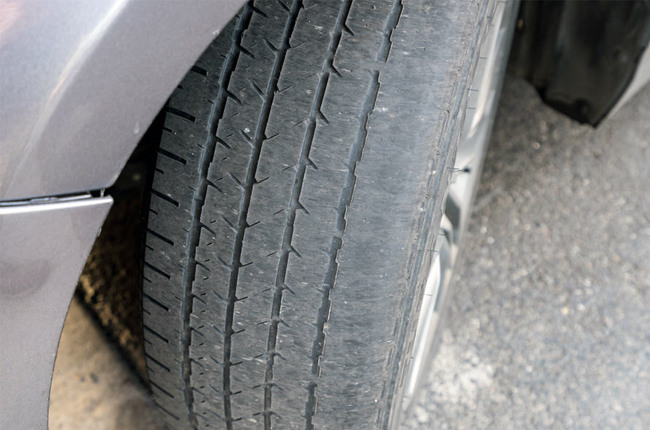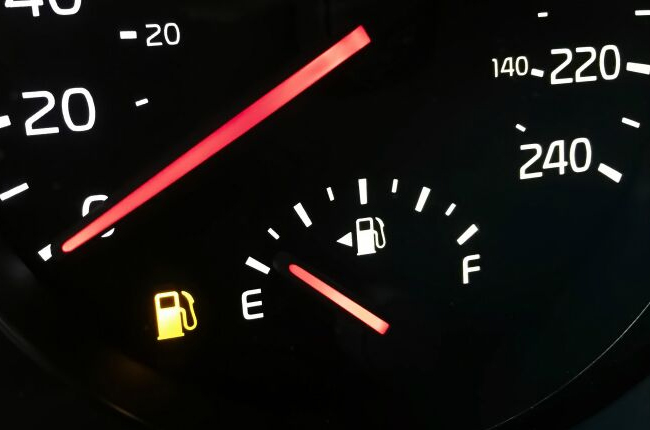
Most drivers today will understand how important wheel alignment is for their vehicles. Not only does it prolong the life of your tires but a proper check will also help give you a safe and balanced ride as well. A proper check now and then will also come with the benefit of giving you improved fuel efficiency to make sure that everything with your tires is in check. With that in mind, we ask the question: what happens when you neglect your vehicle’s wheel alignment?
Uneven tire wear

One of the first few signs that your vehicle will give you when its alignment is incorrect is uneven wear and tear with the tires. A misaligned wheel may have a wider or slimmer contact patch to the pavement compared to the other tires –be it correctly adjusted or not– resulting in uneven tire wear and tear. If left as is, it may cause vibrations on the steering wheel and eventually the whole vehicle. This is why you should always take time to look at your tires to see if they are wearing out correctly or if there are any signs that something is wrong with the alignment. A quick visual inspection whenever your gas is up should do the trick or when your car goes in for its preventive maintenance.
Lower than normal fuel economy

Another sign that something might be wrong with your vehicle is lower than normal fuel economy. Uneven tire contact to the ground can also cause flat spots which will create drag instead of letting the wheel roll freely. This in effect will use more fuel to get the tire in motion and lower your vehicle’s gas mileage.
Stiff or heavier than normal steering feel

Your steering wheel feels will help give you a general idea of what’s wrong with your alignment. If you feel that your car is pulling in one direction something could be wrong with one of the tires. If your alignment is off, you will notice vibrations along with the drag that is produced by problematic tires as it will tend to pull your vehicle to one side because of its uneven surface and power delivery to the ground. If you notice any of these signs it’s best to have your vehicle aligned immediately to avoid further damage to your tires.
Making sure that your vehicle is aligned

Misalignment can happen from the impact of running over potholes or curbs can cause damage to your car’s tires, as well as its suspension and steering system. Be attentive, drive within the speed limit, and put enough space between you and the vehicle ahead so you can have time to see the road in front and react.
Make sure to check your wheels and tires

One way to know that your vehicle is correctly aligned is a routine inspection of the wheels and tires. Like we said earlier, any uneven wear can be an indication that either your wheels aren't straight or there's something else that's wrong with the vehicle. When this happens, it would be a good option to drop by your local wheel store or mechanic.
Align your vehicle at least once a year

In a year, your vehicle’s alignment will slowly become imbalanced. With that in mind, To get the optimal performance out of your car, the tires, suspension, and steering will all need to be measured and adjusted back to the recommended manufacturer settings now and then. It is suggested that this should be done at least annually or every time you bring your car in for periodic maintenance service (PMS).
Making sure that your vehicle’s wheels are aligned will not just save you thousands of pesos worth of repairs, but also keep you and your passengers safe. Regularly check your tire’s health and when you see uneven wear, don’t hesitate to bring it in.
Latest Features
-
An all-electric future: The Porsche Macan Electric / Featured Article
Porsche’s Macan goes all-electric; it’s a new beast with an electrified heart, yet unmistakably Porsche in performance and spirit.
-
Which Kia should I buy? / Featured Article
We’re here to help you decide which Kia vehicle is best for you, whether it’s a sedan, crossover, or minivan.
-
Why Lynk & Co is a good option for luxury car buyers / Featured Article
Lynk & Co offers premium value for those exploring the luxury market.
Popular Articles
-
Electric Vehicles in the Philippines for under P1 million
Jerome Tresvalles · Aug 19, 2025
-
Top 3 Cars For Every Lifestyle—What Cars Are Right For You? | Behind a Desk
Caco Tirona · Apr 24, 2024
-
5 Tips to Maximize Fuel Efficiency
Jerome Tresvalles · Sep 09, 2024
-
Five driving habits that are draining your fuel tank
Jerome Tresvalles · Jun 24, 2025
-
Can engine braking harm your engine?
Jerome Tresvalles · Sep 11, 2025
-
Do electric cars even need maintenance?
Jerome Tresvalles · Oct 23, 2024
-
Best vehicles for an active outdoor lifestyle
Shaynah Miranda · Jul 25, 2024
-
How to drive different types of vehicle transmissions
May 23, 2024
-
5 easy ways to keep your car interior clean
Allysa Mae Zulueta · Nov 15, 2021
-
How to survive Metro Manila traffic
Earl Lee · Aug 16, 2022



